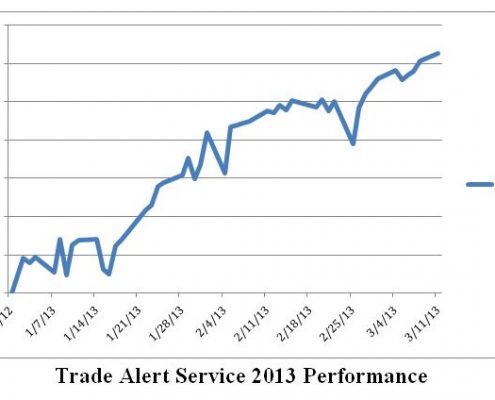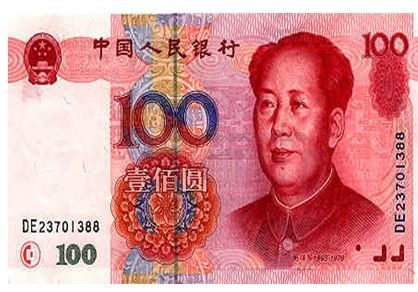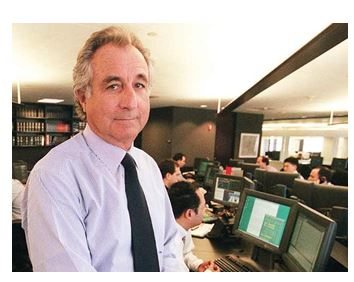
I rely on hundreds of 'moles' around the world whose job it is to watch a single, but important indicator for the world economy. One of them checks for me the want ads in the manufacturing mega city of Shenzhen, China, and what he told me last week was alarming.
Wage demands by Chinese workers have been skyrocketing this year. The biggest increases have been at the low end of the spectrum, where migrant workers from the provinces are earning up to 40% more than a year ago. Wage settlements of 20% or more for trained workers are common. One factory that gave staff only a 10% increase saw many of them fail to return after the recent Chinese lunar New Year.
Of course China's blistering 8% GDP growth is to cause, which has pushed inflation well beyond the government's 4% target. So the cost of living in the Middle Kingdom is rising dramatically. The problem has been particularly severe with imported commodities, such as in food. Hence, the increased demands.
This is important for the rest of us because low wages have been the cornerstone of the Chinese economic miracle. In just the last decade, average monthly Chinese wages have climbed from the bottom rung to the middle tier. That seriously erodes the country's cost advantage, which has gained such enormous shares in foreign markets, like the US. Take away the country's price advantages, and demand will wither, slowing growth globally.
What will they be demanding next? Collective bargaining rights? In the meantime, keep checking those Craig's List entries for Shanghai.
Average Monthly Salary
$3,099 Yokohama, Japan
$1,220 Seoul, South Korea
$888 Taipei, Taiwan
$235 Shenzhen, China
$148 Jakarta, Indonesia
$100 Ho Chi Minh City, Vietnam
$47 Dhaka, Bangla Desh
$1.25 an Hour? You Must Be Joking!
Global Market Comments
March 13, 2013
Fiat Lux
Featured Trade:
(APRIL 12 SAN FRANCISCO STRATEGY LUNCHEON),
(BLACK SWANS ARE CIRCLING), (SPX),
(A COW BASED ECONOMICS LESSON)
S&P 500 Large Cap Index (SPX)
Come join me for lunch at the Mad Hedge Fund Trader?s Global Strategy Update, which I will be conducting in San Francisco on Friday, April 12, 2013. An excellent meal will be followed by a wide-ranging discussion and an extended question and answer period.
I?ll be giving you my up to date view on stocks, bonds, currencies, commodities, precious metals, and real estate. And to keep you in suspense, I?ll be throwing a few surprises out there too. Tickets are available for $189.
I?ll be arriving at 11:00 and leaving late in case anyone wants to have a one on one discussion, or just sit around and chew the fat about the financial markets.
The lunch will be held at a private club in downtown San Francisco near Union Square that will be emailed with your purchase confirmation.
I look forward to meeting you, and thank you for supporting my research. To purchase tickets for the luncheons, please go to my online store.
SOCIALISM
You have 2 cows.
You give one to your neighbor.
COMMUNISM
You have 2 cows.
The State takes both and gives you some milk.
FASCISM
You have 2 cows.
The State takes both and sells you some milk.
NAZISM
You have 2 cows.
The State takes both and shoots you.
BUREAUCRATISM
You have 2 cows.
The State takes both, shoots one, milks the other, and then throws the
milk away.
TRADITIONAL CAPITALISM
You have two cows.
You sell one and buy a bull.
Your herd multiplies, and the economy grows.
You sell them and retire on the income.
ROYAL BANK OF SCOTLAND (VENTURE) CAPITALISM
You have two cows.
You sell three of them to your publicly listed company, using letters of
credit opened by your brother-in-law at the bank, then execute a
debt/equity swap with an associated general offer so that you get all
four cows back, with a tax exemption for five cows. The milk rights of the six cows are transferred via an intermediary to a Cayman Island Company secretly owned by the majority shareholder who sells the rights to all seven cows back to your listed company. The annual report says the company owns eight cows, with an option on one more.
You sell one cow to buy a new president of the United States , leaving you with nine cows.
No balance sheet provided with the release.
The public then buys your bull.
SURREALISM
You have two giraffes.
The government requires you to take harmonica lessons.
AN AMERICAN CORPORATION
You have two cows.
You sell one, and force the other to produce the milk of four cows.
Later, you hire a consultant to analyze why the cow has dropped dead.
A FRENCH CORPORATION
You have two cows.
You go on strike, organize a riot, and block the roads, because you
want three cows.
A JAPANESE CORPORATION
You have two cows.
You redesign them so they are one-tenth the size of an ordinary cow and produce twenty times the milk.
You then create a clever cow cartoon image called a Cowkimona and market it worldwide.
AN ITALIAN CORPORATION
You have two cows, but you don't know where they are.
You decide to have lunch.
A SWISS CORPORATION
You have 5000 cows. None of them belong to you.
You charge the owners for storing them.
A CHINESE CORPORATION
You have two cows.
You have 300 people milking them.
You claim that you have full employment, and high bovine productivity.
You arrest the newsman who reported the real situation.
AN INDIAN CORPORATION
You have two cows.
You worship them.
A BRITISH CORPORATION
You have two cows.
Both are mad.
AN IRAQI CORPORATION
Everyone thinks you have lots of cows.
You tell them that you have none.
No-one believes you, so they bomb the ** out of you and invade your
country.
You still have no cows, but at least you are now a Democracy.
AN AUSTRALIAN CORPORATION
You have two cows.
Business seems pretty good.
You close the office and go for a few beers to celebrate.
A NEW ZEALAND CORPORATION
You have two cows.
The one on the left looks very attractive.
Global Market Comments
March 12, 2013
Fiat Lux
Featured Trade:
(TRADE ALERT SERVICE ROCKETS TO 30% GAIN IN 2013),
(SPY), (IWM), (F), (AIG), (FCX), (FXY), (YCS),
?(FXB), (FXE), (EUO), (VIX)
(LOAD THE BOAT WITH THE CHINESE YUAN), (CYB),
(HOW TO AVOID THE PONZI SCHEME TRAP),
(TESTIMONIAL)
SPDR S&P 500 (SPY)
iShares Russell 2000 Index (IWM)
Ford Motor Co. (F)
American International Group, Inc. (AIG)
Freeport-McMoRan Copper & Gold Inc. (FCX)
CurrencyShares Japanese Yen Trust (FXY)
ProShares UltraShort Yen (YCS)
CurrencyShares British Pound Sterling Tr (FXB)
CurrencyShares Euro Trust (FXE)
ProShares UltraShort Euro (EUO)
VOLATILITYS&P500 (VIX)
WisdomTree Chinese Yuan (CYB)
The Trade Alert Service of the Mad Hedge Fund Trader has posted a 30.64% profit year to date, taking it to another new all time high. The 27-month total return has punched through to an awesome 86%, compared to a miserable 10% return for the Dow average during the same period. That raises the average annualized return for the service to 38%, elevating it to the pinnacle of hedge fund ranks.
My bet that the stock markets would continue to grind up to new all time highs in the face of complete disbelief has paid off big time, as I continued to run sizeable long positions in the S&P 500 and the Russell 2000 (IWM). A hefty weighting in Ford Motors (F) has driven me to impressive profitability.
My substantial short volatility positions are contributing to profits daily, with the closely watched (VIX) Index plummeting to a new five year low at 11.5%. I booked nice profits from holdings in American International Group (AIG) and copper producer, Freeport McMoRan (FCX). I also prudently doubled up my short positions in the Japanese yen for the third time this year.
It has truly been a month where everything is working. Even my short positions in deep out-of-the-money calls on the (SPY) contributed to my P&L. While the (SPY) has been going up like clockwork, it has not appreciated fast enough to hurt the position.
Trade Alerts that I wrote up, but never sent, worked. That's because I have been 100% invested for the entire year in long stock/short positions. However, followers of my biweekly strategy webinars caught my drift and benefited from the thinking, and many did these trades on their own. These included shorts in the Treasury bond market, (TLT), the Euro (FXE), (EUO), and the British pound (FXB).
Sometimes the best trades are the ones you don't do. I have been able to dodge the bullets that have been killing off other hedge funds, including those in gold (GLD), oil (USO), and commodities (CORN), (CU).
All told, the last 20 consecutive recommendations of the Trade Alert Service have been profitable. I have six trades to go to beat this record. Watch this space.
Global Trading Dispatch, my highly innovative and successful trade-mentoring program, earned a net return for readers of 40.17% in 2011 and 14.87% in 2012. The service includes my Trade Alert Service, daily newsletter, real-time trading portfolio, an enormous trading idea database, and live biweekly strategy webinars. To subscribe, please go to my website at www.madhedgefundtrader.com, find the "Global Trading Dispatch" box on the right, and click on the lime green "SUBSCRIBE NOW" button.
Nice Long!
Nice Short!
Any doubts that the Chinese Yuan is a huge screaming buy should have been dispelled when news came out that China had displaced Germany as the world?s largest exporter. The Middle Kingdom shipped $1.9 trillion in goods in 2012, compared to only $1.4 trillion for Deutschland. The US has not held the top spot since 2003.
China?s surging exports of electrical machinery, power generation equipment, clothes, and steel were a major contributor. German exports were mired down by lackluster economic recovery in the EC, which has also been a major factor behind the weak euro. Sales of luxury Mercedes and BMW cars, machinery, and chemicals have cratered.
Back-to-back interest rate rises for the Yuan, and a snugging of bank reserve requirements by the People?s Bank of China, have stiffened the backbone of the Yuan even further. That is the price of allowing the Federal Reserve to set China?s monetary policy via a fixed Yuan exchange rate. Is it possible that Obama?s stimulus program is reviving China?s economy more than our own? That?s what highly divergent economic growth rates suggest, with China taking on 8% a year, versus only 2% for the US.
The last really big currency realignment was a series of devaluations that took the Yuan down from a high of 1.50 to the dollar in 1980. By the mid nineties it had depreciated by 84%. The goal was to make exports more competitive. The Chinese succeeded beyond their wildest dreams. This is why today?s Chinese complaints that Japan is using their country as a ?garbage dump? for the yen is falling on deaf ears in Tokyo.
There is absolutely no way that the fixed Yuan rate regime can continue. There are only two possible outcomes. An artificially low Yuan has to eventually cause the country?s inflation rate to explode. Or a global economic recovery causes Chinese exports to balloon to politically intolerable levels. Either case forces a major Yuan revaluation.
Of course, timing is everything. It?s tough to know how many sticks it takes to break a camel?s back. Talk to senior officials at the People?s Bank of China, and they?ll tell you they still need a weak currency to develop their impoverished economy. Per capita income is still at only $5,000, a tenth of that of the US. But that is up a lot from $100 in 1978. I remember the grinding poverty of the ?old? China all too well.
Talk to senior US Treasury officials, and they?ll tell you they are amazed that the Chinese peg has lasted this long. How many exports will it take to break it? $2 trillion, $3 trillion, or $24 trillion? It?s anyone?s guess.
One thing is certain. A free-floating Yuan would be at least 50% higher than it is today, and possibly 100%. In fact, the desire to prevent foreign hedge funds from making a killing in the market is not a small element in Beijing?s thinking. The Chinese Central bank governor says he won?t entertain a revaluation for the foreseeable future. The Americans say they need it tomorrow.
To me, that means about six months. Buy the Yuan ETF, the (CYB). Just think of it as an ETF with an attached lottery ticket. If the Chinese continue to stonewall, you will get the token 3% annual revaluation the swaps have been discounting. Since the chance of the Chinese devaluing is nil, that beats the hell out of the zero interest rates you now get with T-bills. If they cave, then you could be in for a home run.
How Many Did You Want?
I spent a sad and depressing, but highly instructional evening with Dr. Stephen Greenspan, who had lost most of his personal fortune with Bernie Madoff. The University of Connecticut psychology professor had poured the bulk of his savings into Sandra Mansky's Tremont feeder fund; receiving convincing trade confirms and rock solid custody statements from the Bank of New York.
This is a particularly bitter pill for Dr. Greenspan to take, because he is an internationally known authority on Ponzi schemes, and just published a book entitled Annals of Gullibility-Why We Get Duped and How to Avoid It. It is a veritable history of scams, starting with Eve's subterfuge to get Adam to eat the apple, to the Trojan horse and the Pied Piper, up to more modern day cons in religion, politics, science, medicine, and yes, personal investments.
Madoff's genius was that the returns he fabricated were small, averaging only 11% a year, making them more believable. In the 1920's, the original Ponzi promised his Boston area Italian immigrant customers a 50% return every 45 days. Madoff also feigned exclusivity, often turning potential investors down, leading them to become even more desirous of joining his club. For a deeper look into Greenspan's fascinating, but expensively learned observations and analysis, go to his website at http://www.stephen-greenspan.com/.
Global Market Comments
March 11, 2013
Fiat Lux
Featured Trade:
(WHY THE STOCK MARKET IS STILL GOING UP),
(SPX), (SPY), (QQQ), (IWM), (OEX), (RSP),
(KKR) (APL) (LINE) (RIG) (AXP), (BMY)
(MURRAY SAYLE: THE PASSING OF A GIANT IN JOURNALISM)
S&P 500 Large Cap Index (SPX)
SPDR S&P 500 (SPY)
PowerShares QQQ (QQQ)
iShares Russell 2000 Index (IWM)
S&P100INDEX (OEX)
Guggenheim S&P 500 Equal Weight (RSP)
Kohlberg Kravis Roberts & Co. (KKR)
Atlas Pipeline Partners, L.P. (APL)
Linn Energy, LLC (LINE),
Transocean Ltd. (RIG)
American Express Company (AXP)
Bristol-Myers Squibb Company (BMY)
I have had an extremely hot hand this year, pushing the 2013 performance of my Trade Alert Service above a stellar 30%. So I am going out on a limb here and predict that the S&P 500 is about to grind up to a new all time high.
Since 2009, Federal Reserve governor, Ben Bernanke, has clearly made our central bank?s top priority jobs and growth, at the eventual expense of a higher inflation rate. The higher stock and home prices, a vast monetary expansion enabled, has also created a huge wealth effect. This is spurring newly emboldened investors to pour more money into risk assets everywhere, save commodities and precious metals. This creates more consumption, and, in the end, finally, more jobs.
Thanks to Ben?s efforts, stock prices have financially reached what most traditional analysts consider ?fair value? after a long four-year slog. The historic 50 year range for price earnings multiples is 9-22, and here we sit today, dead center at 15.5, assuming S&P 500 earnings of $100/share.
But this time, it?s different. Ten year Treasury yields at 2.05% today, are about 400-500 basis points lower than seen during past stock market peaks. Even after the $85 billion sequestration hit, Washington is still pumping $800 billion a year into the economy, even though the recovery is four years old. And Ben Bernanke shows no sign of taking the punch bowl away anytime soon.
This is why, having failed to break 1,485 of the downside on the heels of the Italian election disappointment on February 25, the index has little choice but to gun for the upside target of 1,585.
Health of this market top is vastly more robust than previous ones. Currently, 85% of the stocks in the (SPX) are trading above their 200 day moving averages, compared to only 50% when markets peaked in 2007, when the market actions was far more concentrated in a handful of stocks.
Such a broad base suggests that a lot of managers are still underinvested, and that the pain trade is to the upside. This is why the February correction that everyone was waiting for never came, and why we saw an incredibly bullish ?time? correction instead of a ?price? one. I was expecting as much.
Indeed, the technical outlook for the market is becoming increasingly positive as is obvious from the charts below. We have seen several successive new highs for the Dow transports for many weeks now, an index of a much more economically sensitive group of stocks.
Look at an equal weighted index of the S&P 500, like the (RSP), and it has already hit a new all time high, a huge plus. Finally, the NASDAQ (QQQ) looks like it is, at long last, putting its lost decade behind it by breaking to new ten-year highs.
Still, there are some qualifications here. The Dow needs to stay above 14,198 for the rest of March for this breakout to be valid. So far, so good. The capitalization weighted (SPX) is also approaching its high in the most overbought condition since 2007, with RSI?s well into the 70 territory. That means a round of profit taking will hit once we do hit a new high.
Another development that has technical analysts extremely excited is that many leadership stocks are catapulting off of bases that took 10-12 years to form. The number of new decade highs greatly exceeds the new lows. This has many chartists calling for a further move in the main indexes up another 10% from here.
Every bull market ends in overvaluation, often an extreme one, and sitting here at fair value, we are not even close for this cycle. Not a day goes by now that I don't get emails from readers asking what to do with cash here. I think the safer bet will be to go with high quality, high growing names where a hefty dividend gives you a cushion against any short-term volatility.
That list would include KKR Financial (KKR) (7.4%), Atlas Pipeline (APL) (7.7%), Linn Energy (LINE) (7.7%), and Transocean (RIG) (4.2%). You could also do worse than American Express (AXP), (1.30%), and Bristol Myers-Squib (BMY) (3.80%).
Party on!




























